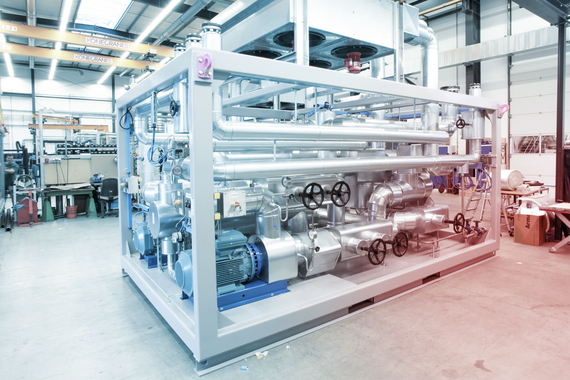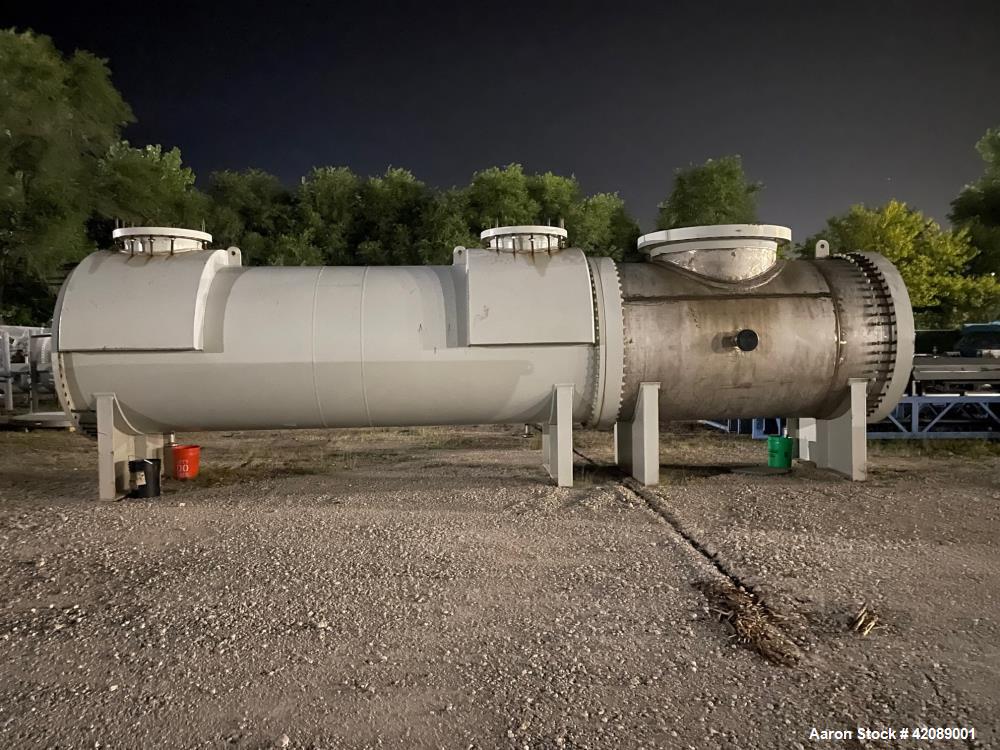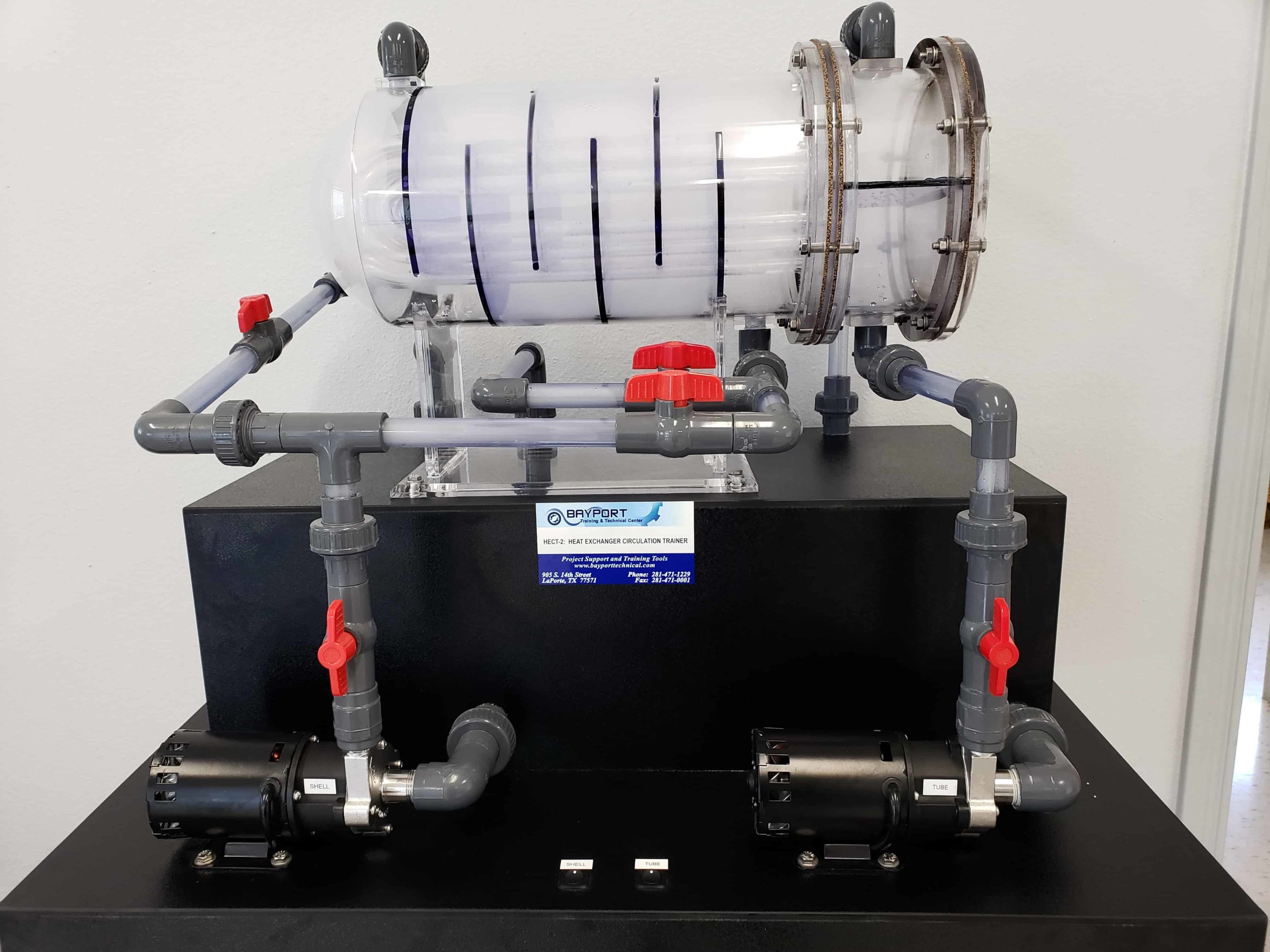Breaking Down How DVS Heat Transfer Systems Use Smart Sensors for Optimal Performance
The Duty of Heat Transfer Solutions in Sustainable Energy Solutions for the Future
Heat transfer systems are important in the quest for sustainable energy services. They optimize thermal energy management, enhancing the performance of sustainable innovations. By employing systems like radiation, convection, and transmission, these systems reduce energy losses. Their duty in solar thermal and geothermal applications is especially significant. As developments emerge, the potential for additional developments raises essential inquiries regarding future energy strategies. What advancements will shape the landscape of sustainable power?
Understanding Heat Transfer Solutions

The Importance of Thermal Energy Administration
Reliable thermal power administration is vital for optimizing energy effectiveness and lessening waste in various systems. By controling temperature level and maximizing Heat transfer processes, organizations can significantly reduce energy intake and functional prices. Reliable monitoring involves the execution of innovative innovations and methods that keep an eye on and manage thermal conditions within systems, making sure that power sources are used efficiently. In addition, correct thermal power monitoring adds to decreasing greenhouse gas discharges, aligning with international sustainability goals. It likewise boosts system reliability and efficiency, resulting in boosted product high quality and longer devices life-span. Ultimately, prioritizing thermal power monitoring is a crucial action in the direction of producing more sustainable power options and fostering an accountable strategy to energy intake in industrial and residential contexts.
Applications of Heat Transfer in Renewable Resource
While different renewable power resources promise sustainability, the reliable application of Heat transfer plays an essential role in their performance. In wind power systems, Heat transfer is made use of for generator element cooling, enhancing performance and long life. Geothermal energy depends on efficient Heat exchange between the earth's subsurface and the liquid distributing in the system, optimizing energy extraction. Biomass energy processes likewise take advantage of Heat transfer, as it assists in converting natural materials into usable gas via pyrolysis and gasification. In addition, in hydropower, maintaining excellent temperatures in tanks can enhance power result. Each of these applications demonstrates the vital relevance of Heat transfer systems in improving sustainable energy modern technologies, ultimately adding to a much more lasting energy future.
Enhancing Solar Thermal Power Effectiveness
As solar thermal power systems continue to evolve, enhancing their effectiveness has ended up being essential for making best use of energy outcome. Advances in Heat transfer modern technologies, such as enhanced thermal storage space products and ingenious Heat exchangers, play a substantial role in enhancing efficiency. By utilizing advanced materials that have remarkable thermal conductivity, systems can capture and move Heat better. Additionally, integrating tracking systems that comply with the sun's course assurances that collection agencies receive suitable solar direct exposure throughout the day. Making use of nanotechnology in solar absorbers can better enhance power absorption prices. Furthermore, incorporating automated control systems assists control temperatures and take care of energy circulation effectively, leading to decreased losses and improved general system efficiency. These improvements lead the way for even more lasting solar thermal power options in the future.
Geothermal Heating: A Sustainable Solution
Geothermal heating offers a feasible choice for lasting energy, providing considerable ecological benefits via minimized greenhouse gas exhausts. Its effectiveness and cost-effectiveness make it an appealing option to standard heating unit. However, difficulties connected to implementation needs to be addressed to optimize its potential effect.
Environmental Advantages of Geothermal
Traditional heating approaches add considerably to greenhouse gas discharges, geothermal heating presents an engaging choice that reduces environmental effect. By using the Planet's inner Heat, geothermal systems utilize a renewable energy source, significantly reducing reliance on fossil gas. This technique creates very little carbon discharges, making it a cleaner choice for commercial and domestic see here now home heating. In addition, geothermal systems promote power performance, as they require much less energy contrasted to conventional furnace. DVS Heat Transfer Systems. The use of geothermal energy likewise helps in lowering air pollution, improving neighborhood air top quality and public wellness. As a lasting option, geothermal home heating supports environment adjustment reduction initiatives, positioning itself as an essential component in the change in the direction of a greener future
Performance and Cost-Effectiveness
Just how does geothermal home heating measure up in terms of efficiency and cost-effectiveness compared to traditional heating systems? Geothermal heating demonstrates premium performance, often accomplishing a coefficient of performance (POLICE) of 3 to 5, suggesting it generates 3 to five devices of Heat for every single unit of electricity eaten. This performance translates into lower operating prices, particularly in regions with secure geothermal resources. Preliminary setup expenses can be more than standard systems; nonetheless, lasting cost savings on energy costs and minimized upkeep costs can counter these upfront financial investments. In addition, many federal governments incentivize geothermal systems via refunds and tax credit ratings, improving their cost-effectiveness. In general, geothermal heating arises as a financially sensible and sustainable choice to more standard home heating options.
Execution Obstacles and Solutions
Numerous difficulties can hinder the widespread execution of geothermal furnace, regardless of their clear advantages as a sustainable power service. High first setup prices frequently hinder financiers and homeowners, making financing a substantial barrier. Furthermore, the geographical restrictions of suitable geothermal websites limit accessibility in certain areas. Neighborhood regulations and allowing procedures can also make complex task growth, leading to hold-ups. Public understanding and understanding of geothermal systems stay low, preventing acceptance. To resolve these obstacles, targeted education projects can enhance open secret, while government rewards can alleviate economic concerns. Working together with neighborhood authorities to improve guidelines may facilitate smoother task authorizations, ultimately advertising the fostering of geothermal heating as a viable, sustainable energy option.
Innovations in Heat Transfer Technologies
Developments in Heat transfer technologies play a crucial function in improving energy performance and sustainability. Advanced Heat exchangers and phase modification products are at the leading edge of these growths, using substantial improvements in thermal management. These technologies not only enhance power usage however likewise add to minimizing environmental effect in various applications.
Advanced Heat Exchangers
Advanced Heat exchangers play a vital duty in boosting power performance throughout different applications in sustainable power services. These devices assist in the transfer of Heat in between two or even more fluids, markedly reducing power consumption in processes such as industrial home heating, air conditioning, and power generation. Developments in products and style, such as making use of nanofluids and small setups, have actually brought about improved thermal efficiency and decreased dimension demands. In addition, improvements in electronic tracking and control systems permit for enhanced operation, further raising effectiveness. By decreasing waste Heat and optimizing power recuperation, progressed Heat exchangers add to reduce carbon footprints and sustain the shift toward eco friendly modern technologies. Their continued growth is essential for accomplishing international energy sustainability goals.
Phase Adjustment Products
The combination of stage adjustment products (PCMs) right into Heat transfer innovations represents a substantial innovation in power administration and efficiency. PCMs absorb and release thermal power throughout their stage modifications, allowing efficient temperature level regulation in building materials and energy systems. By keeping excess Heat throughout optimal durations and releasing it when need rises, PCMs add to fill changing and power preservation - DVS Heat Transfer Systems. This capability boosts the performance of renewable resource systems, especially in solar thermal applications. Furthermore, PCMs can enhance why not check here the thermal comfort of interior atmospheres, lowering reliance on traditional home heating and cooling approaches. As technologies in PCM solutions remain to arise, their role in lasting energy options is poised to grow, providing appealing avenues for future research and application

Future Leads for Heat Transfer in Lasting Power
As the need for sustainable energy options continues to increase, the duty of Heat transfer systems is becoming progressively critical in shaping future modern technologies. Innovations in materials and styles are anticipated to boost performance in Heat transfer, lowering power losses in different applications. The combination of innovative thermal storage space systems, such as stage change materials and thermochemical storage, will allow better management of energy resources. Study right into nanofluids and biomimetic Heat exchangers might better maximize thermal performance. Moreover, the fostering of wise innovations will enable for real-time surveillance and flexible control of Heat transfer procedures. These improvements are poised to significantly add to the overall effectiveness and sustainability of power systems, leading the method for an extra energy-efficient future.
Often Asked Questions
How Can Individuals Implement Heat Transfer Solution at Home?

Individuals can implement Heat transfer systems in your home by setting up energy-efficient appliances, making use of radiant heat, and enhancing insulation. These steps enhance power efficiency, lower expenses, and advertise sustainable techniques in residential settings.

What Are the Costs Related To Setting Up Heat Transfer Equipments?
The expenses connected with mounting Heat transfer systems differ commonly, normally including devices, installment labor, and upkeep. Aspects such as system kind, home size, and regional policies greatly affect the overall expenditure involved.
Are There Federal Government Motivations for Heat Transfer System Installations?
Federal government motivations for Heat transfer system setups vary by region and can consist of tax credits, gives, and refunds. These financial benefits intend to motivate adoption, inevitably promoting power performance and lowering environmental impact within neighborhoods.
How Do Heat Transfer Solutions Influence Energy Costs?
Heat transfer systems significantly affect energy costs by optimizing energy efficiency. By boosting the transfer of Heat, these systems lower energy intake, causing lower energy costs and producing a more sustainable strategy to power administration.
What Upkeep Is Required for Heat Transfer Systems?
Maintenance for Heat transfer systems includes normal assessments, cleaning of check my blog components, inspecting fluid levels, ensuring correct insulation, and changing worn parts. These tasks assist preserve performance, prevent breakdowns, and lengthen the system's functional lifespan.
These systems promote the movement of thermal energy from one medium to an additional, allowing the transfer of Heat for heating, energy, or air conditioning generation objectives. Geothermal power relies on efficient Heat exchange between the earth's subsurface and the liquid flowing in the system, taking full advantage of power removal. In addition, geothermal systems advertise power performance, as they call for much less energy compared to conventional heating systems. Advanced Heat exchangers play an essential duty in improving energy effectiveness throughout different applications in lasting energy options. Heat transfer systems significantly influence energy bills by maximizing power effectiveness.